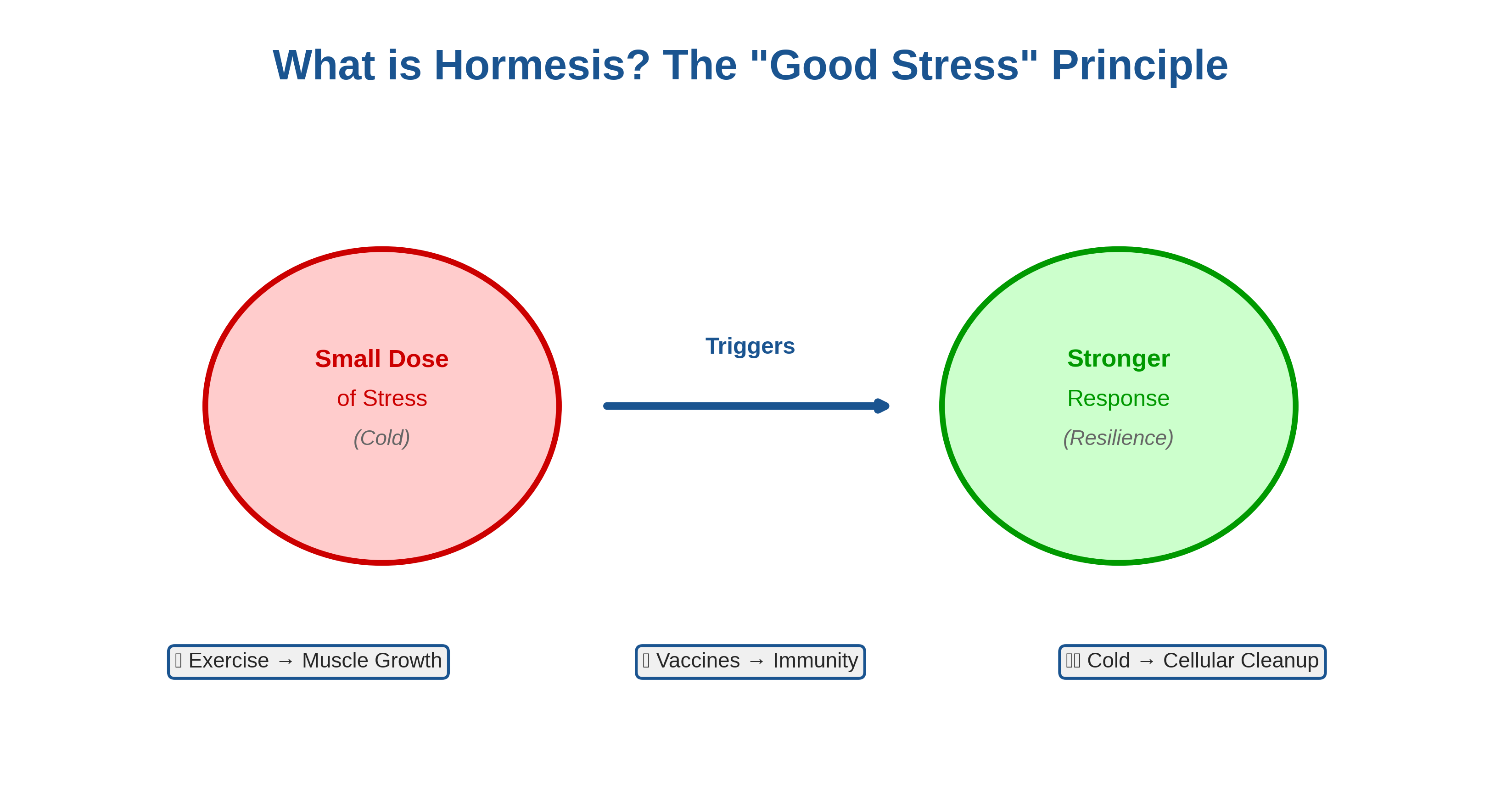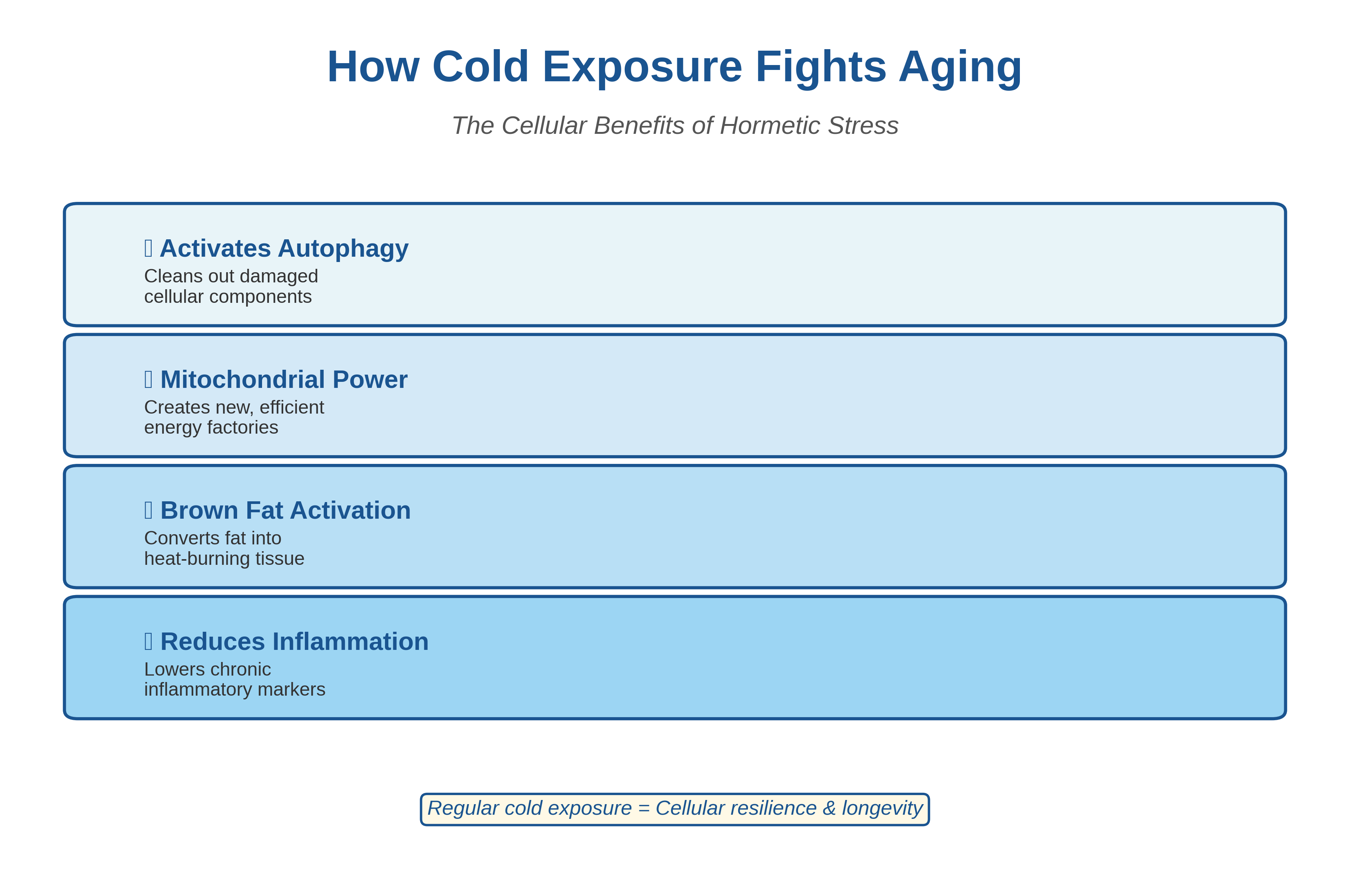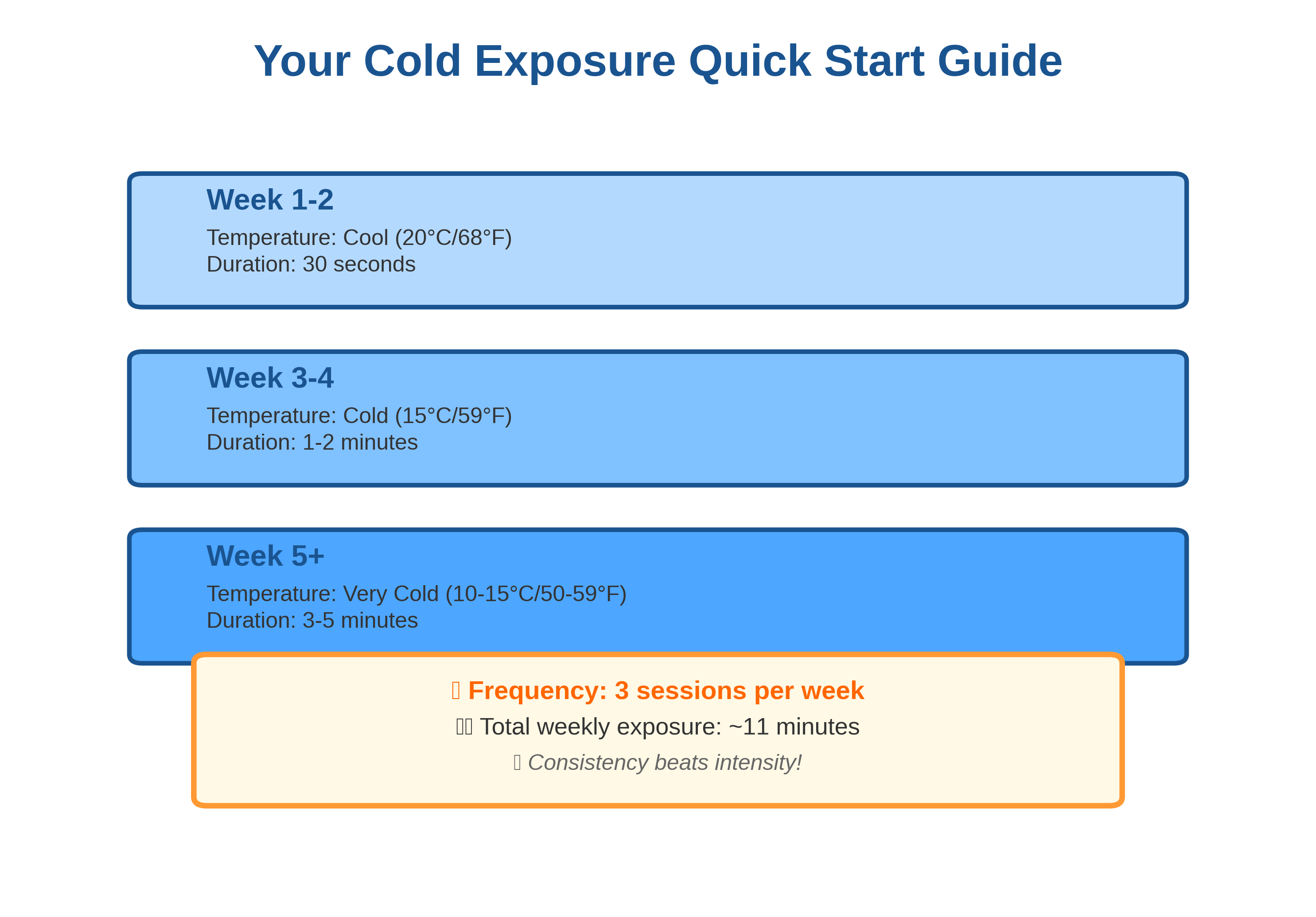Look, I get it. When someone tells you that dunking yourself in freezing water is the secret to living longer, your first instinct is probably to roll your eyes. I mean, we spend our whole lives seeking comfort—heated homes, warm showers, cozy blankets. And now you’re telling me I should voluntarily make myself uncomfortable? In cold water?
But here’s the thing: the science behind this is actually pretty wild. And I’m not talking about some wellness guru’s Instagram claims. I’m talking about real, peer-reviewed research showing that brief exposure to cold can literally rewire your biology at the cellular level.
We’re living in an age where chronic inflammation, cellular damage, and metabolic decline are basically the norm as we age. We’re constantly looking for the next supplement, the next biohack, the next miracle cure. But what if one of the most powerful anti-aging tools was as simple as turning your shower knob to cold for a few minutes?
Let me walk you through what actually happens in your body when you embrace the chill—and why it might just be the longevity hack you’ve been missing.
What is Hormesis? (Or: Why “What Doesn’t Kill You” Actually Makes Sense)

You know that saying, “What doesn’t kill you makes you stronger”? Turns out, there’s actual science behind it. It’s called hormesis, and it’s basically your body’s way of overcompensating when faced with a challenge.
Think about it like this: when you go to the gym and lift weights, you’re literally tearing your muscle fibers. Sounds bad, right? But your body doesn’t just repair the damage—it adds more muscle tissue so you can handle that stress better next time. That’s hormesis in action.
The same thing happens with vaccines. You get injected with a harmless version of a virus, and your immune system goes into overdrive, creating antibodies that’ll protect you if you ever encounter the real deal.
Cold exposure works the exact same way. When you step into that icy shower, your body freaks out a little (okay, maybe a lot). But instead of just surviving the experience, it actually upgrades your cellular machinery to become more resilient.
As the folks at Healthspan explain it:
“Cold stress influences core longevity pathways by modulating autophagy and apoptosis. Initial exposures impair autophagic flux and increase apoptotic signaling, reflecting cellular stress. With repeated exposure, autophagy improves while apoptosis diminishes, indicating a hormetic adaptation. The cold, when sustained and repeated, appears to recalibrate cellular cleanup systems to favor repair over cell death.”
Translation? Your cells literally learn to clean themselves up better and stop dying off prematurely. Pretty cool, right? (Pun absolutely intended.)
The Science of the Shiver: What Actually Happens When You Get Cold
So what’s going on in your body during those first shocking seconds in cold water? A lot, actually.
First, your body releases what are called cold shock proteins. Think of these as your internal alarm system, sending out an “all hands on deck!” signal throughout your body. Your heart rate spikes, your breathing quickens, and blood rushes away from your extremities toward your core to protect your vital organs.
Now, this might sound scary, but it’s actually triggering some seriously beneficial processes:
Fighting the Fire of Inflammation
Chronic inflammation is like a slow-burning fire inside your body, damaging your cells and accelerating aging. It’s linked to pretty much every age-related disease you can think of—heart disease, diabetes, Alzheimer’s, arthritis, you name it.
Regular cold exposure acts like a fire extinguisher. Research shows that people who regularly expose themselves to cold water have significantly lower levels of inflammatory markers and higher levels of anti-inflammatory molecules. It’s like hitting the reset button on your immune system.
Giving Your Heart a Workout
When you get cold, your blood vessels constrict (that’s why your fingers get so cold first). But then, as your body works to warm you back up, they dilate again. This back-and-forth is actually a fantastic workout for your cardiovascular system.
Studies on winter swimmers—yeah, those crazy people who swim in frozen lakes—have found something remarkable. They have healthier cholesterol profiles, with higher “good” HDL cholesterol and lower “bad” LDL cholesterol. They also have reduced levels of homocysteine, an amino acid that’s been linked to arterial damage.
Here’s a quick breakdown of how your body responds to cold over time:
| Response Type | Immediate Effects (First Few Sessions) | Long-Term Adaptations (Weeks to Months) |
|---|---|---|
| Nervous System | Adrenaline rush, “fight-or-flight” mode activated | Sustained dopamine boost, better mood, improved stress tolerance |
| Cardiovascular | Blood vessels constrict, heart rate jumps | Better circulation, healthier cholesterol, lower resting heart rate |
| Metabolic | Shivering to generate heat (burns calories!) | More brown fat, better blood sugar control |
| Cellular | Cold shock proteins released, stress response | Enhanced cellular cleanup, new mitochondria, less inflammation |
Cellular Housekeeping: How Cold Exposure Cleans Out the Junk

Okay, this is where it gets really interesting. The benefits of cold exposure go way beyond just feeling invigorated. We’re talking about deep, cellular-level changes that can actually slow down aging.
Autophagy: Your Body’s Recycling Program
Ever heard of autophagy? It literally means “self-eating,” which sounds gross, but it’s actually one of your body’s most important anti-aging mechanisms.
Think of it like this: your cells are constantly producing waste—damaged proteins, dysfunctional organelles, cellular debris. When you’re young, your body is really good at cleaning this stuff up. But as you age, this cleanup process slows down, and all that junk starts to accumulate. That’s when you start seeing age-related diseases pop up.
Cold exposure is like hiring a professional cleaning crew for your cells. A 2021 study found that chronic cold exposure significantly boosts autophagy, especially in your brown fat tissue. Your cells start identifying and breaking down all that accumulated damage, making room for fresh, healthy components.
Building Better Power Plants
Your mitochondria are like tiny power plants inside each of your cells, generating the energy you need to function. But here’s the problem: as you age, your mitochondria become less efficient and start to die off. That’s a big reason why people feel more tired and sluggish as they get older.
Cold exposure forces your body to become more energy-efficient. To generate heat, your body needs to produce more energy, which means it needs better, more numerous mitochondria. This process is called mitochondrial biogenesis—literally, the birth of new mitochondria.
More mitochondria = more energy = feeling younger and more vibrant. It’s that simple.
Activating Your Longevity Genes
If you’ve been following the longevity space at all, you’ve probably heard about sirtuins—the so-called “longevity genes.” These proteins are like the maintenance crew for your DNA, helping to repair damage and regulate inflammation.
But here’s the catch: sirtuins need fuel to work, and that fuel is a molecule called NAD+. Unfortunately, as we age, our NAD+ levels naturally decline, which means our sirtuins can’t do their job as well.
Enter cold exposure. According to longevity researcher Dr. David Sinclair, cold acts as a signal to your body to ramp up sirtuin activity. It’s like flipping a switch that tells your cells, “Hey, we’re under stress here—time to activate the repair systems!”
The Brown Fat Revolution: Turning Your Body into a Calorie-Burning Machine
Here’s something that might surprise you: not all fat is created equal. In fact, there’s a type of fat that actually helps you stay lean and metabolically healthy. It’s called brown adipose tissue, or brown fat for short.
Unlike white fat (the stuff that accumulates around your belly), brown fat is metabolically active. Its whole purpose is to burn calories to generate heat. It’s packed with mitochondria, which is what gives it that brownish color and its incredible calorie-burning power.
The problem? As we age, we lose brown fat. Babies are born with a lot of it (that’s how they stay warm), but by the time we’re adults, most of us have very little left. And that’s part of why our metabolism slows down as we age.
But here’s the good news: cold exposure can actually activate and even create more brown fat. When your body gets cold, it signals your brown fat to start burning calories to warm you up. And with repeated exposure, your body can actually convert some of your regular white fat into brown-like fat.
As cellular scientist Dr. Nichola Conlon explains:
“Regular cold therapy can increase the amount of brown fat in the body, improve metabolism, and make the body more metabolically resilient.”
This increased metabolic resilience means better blood sugar control, improved insulin sensitivity, and a healthier body composition. All crucial factors for longevity.
Real People, Real Results: Stories from the Cold
The science is compelling, but let’s talk about real people who’ve made cold exposure part of their lives.
The Iceman’s Journey
You’ve probably heard of Wim Hof, aka “The Iceman.” This Dutch guy has broken over 20 world records related to cold exposure—things like climbing Mount Kilimanjaro in shorts and sitting in ice for hours.
But his story isn’t just about breaking records. After losing his wife to suicide, Wim found healing in the cold. That icy water became a place of stillness and peace for him. He developed what’s now called the Wim Hof Method—a combination of breathing techniques, cold exposure, and mindset training—and has since helped thousands of people discover the transformative power of cold.
The Swimming Community That Defies Age
But you don’t need to be an extreme athlete to benefit from cold exposure. At the Jesus Green Lido in Cambridge, England, there’s a community of swimmers, most of them over 60, who swim year-round in an outdoor pool—even when the water temperature drops to a bone-chilling 5.5°C (42°F).
A researcher who studied this community found something beautiful. These swimmers weren’t just doing it for the physical benefits. They talked about feeling alive, experiencing a sense of thrill, and finding a deep, lasting peace that stayed with them for hours after each swim.
But perhaps most importantly, they found community. In a world where loneliness is increasingly recognized as a serious health risk, these cold water swimmers have created a “second family,” as one of them put it.
Here are just a few of their stories:
| Person | Age | What They Discovered |
|---|---|---|
| Celia | 70s | Started swimming at 65 for her first triathlon. Now it’s her source of excitement: “It’s something you can do with a little bobble hat on and a little slow stroke, but you still feel it’s exciting.” |
| Becky | 60+ | Found daily resilience: “I find that by having swam, I can get through any day.” |
| Nicky | 60+ | Discovered community: “I always say Jesus Green feels like your second home and a second family.” |
As the researcher herself noted after joining them: “In cold water, every cell of my body remembers it’s alive.”
That’s the power of cold exposure. It’s not just about the science—it’s about feeling truly, vibrantly alive.
Your Practical Guide: How to Actually Start (Without Freezing to Death)

Alright, so you’re intrigued. Maybe even convinced. But how do you actually start without shocking your system too much?
The good news is you don’t need an ice bath or a frozen lake. You can start right in your own shower. Here’s a simple, progressive protocol based on recommendations from the Longevity Foundation:
Week 1-2: The Baby Steps
Start at the end of your regular warm shower. Turn the water to cool (not freezing—just uncomfortably cool) for the last 30 seconds. Focus on breathing slowly and calmly through the initial shock. The goal here isn’t to tough it out—it’s to learn to control your stress response.
Week 3-4: Turning Down the Dial
Once 30 seconds feels manageable, try going a bit colder and extending to 1-2 minutes. You’re aiming for water around 15°C (59°F). You’ll probably start shivering a bit, and that’s actually a good sign—it means your body is activating thermogenesis.
Week 5 and Beyond: The Full Plunge
Now you can aim for the optimal range: 10-15°C (50-59°F) for 3-5 minutes. This is where the magic really happens. Your body is now in full hormetic stress mode, activating all those longevity pathways we talked about.
How Often?
Aim for about 3 sessions per week, totaling around 11 minutes of cold exposure. Consistency is way more important than intensity here.
Safety First (Seriously, Read This Part)
Look, cold exposure is powerful, but it’s also a stressor on your body. Here’s what you need to know to stay safe:
Talk to your doctor first if you have any heart conditions, high blood pressure, or other serious health issues. The cold causes rapid changes in heart rate and blood pressure, which can be dangerous if you have cardiovascular problems.
Never hyperventilate before or during cold water immersion. I know the Wim Hof Method includes breathing exercises, but those should be done separately from water immersion. Hyperventilating in water can be extremely dangerous.
Listen to your body. If you feel dizzy, lightheaded, or experience painful shivering, get out. This isn’t about being tough—it’s about hormetic stress, not traumatic stress.
Warm up naturally. After your cold exposure, let your body warm itself up gradually. Avoid jumping straight into a hot shower, as the rapid temperature change can be a shock to your system.
Your Burning Questions, Answered
“Is this actually safe for everyone?”
For most healthy people, yes. But if you’re pregnant, have heart disease, high blood pressure, diabetes, or Raynaud’s syndrome, you need to talk to your doctor first. Cold exposure is a significant stressor, and while that’s the point, it’s not appropriate for everyone.
“How long until I see results?”
You’ll probably feel an immediate mood boost and increased alertness after your very first session—that’s the dopamine and norepinephrine kicking in. But the deeper benefits like improved metabolism, reduced inflammation, and enhanced cellular cleanup take a few weeks of consistent practice. Think of it like going to the gym: you won’t see muscles after one workout, but stick with it for a month and you’ll definitely notice changes.
“Will I lose weight doing this?”
Maybe, but don’t count on it as your primary weight loss strategy. Yes, cold exposure boosts your metabolism and activates calorie-burning brown fat. But it’s more of an accelerator for a healthy lifestyle, not a replacement for good nutrition and exercise. Think of it as a tool that makes your other healthy habits work better.
“I have a heart condition—can I still do this?”
Honestly? Probably not without medical supervision. The cold causes rapid spikes in heart rate and blood pressure, which can be dangerous if your cardiovascular system is already compromised. Talk to your cardiologist before even considering it.
“What’s better—a cold shower or an ice bath?”
Start with cold showers. They’re accessible, easy to control, and provide plenty of hormetic stress for beginners. Ice baths are more intense because your whole body is submerged in static cold water, which creates a stronger physiological response. But they’re definitely not necessary, especially when you’re just starting out. Master the cold shower first, then decide if you want to go deeper.
The Bottom Line: Is Cold Exposure Worth It?
Here’s the honest truth: cold exposure isn’t a magic pill. It won’t single-handedly reverse aging or add decades to your life. The Longevity Foundation puts it well: while cold exposure clearly engages fundamental aging-related processes like inflammation and autophagy, direct evidence of lifespan extension in humans is still lacking.
But you know what? That doesn’t mean it’s not worth doing.
The science shows that regular cold exposure reduces inflammation, boosts your metabolism, activates cellular cleanup mechanisms, and stimulates the creation of new mitochondria. It improves your mood, builds mental resilience, and might even help you build a community (if you join a cold plunge group).
And perhaps most importantly, it’s accessible. You don’t need expensive supplements, fancy equipment, or a gym membership. You just need a shower and the willingness to be uncomfortable for a few minutes.
So here’s my challenge to you: try it for 30 days. Start with just 30 seconds of cold at the end of your shower. Focus on your breathing. Notice how you feel afterward. See if you can work your way up to a minute, then two.
You might just find that those few minutes of cold become the most invigorating part of your day. And who knows? You might be activating longevity pathways that’ll keep you healthier and more vibrant for years to come.
Stay cold, my friends. ❄️
References
- Healthspan. (2025). “The Biology of Cold Exposure: A Hormetic Stressor That Activates Autophagy, Improves Metabolism, and Reduces Inflammation”
- Kunutsor, S. K., et al. (2024). “The untapped potential of cold water therapy as part of a healthy lifestyle”. Postgraduate Medicine.
- Longevity Foundation. (2025). “Cold-Water Immersion”
- Yau, W. W., et al. (2021). “Chronic cold exposure induces autophagy to promote fatty acid oxidation, mitochondrial turnover, and thermogenesis in brown adipose tissue”. iScience.
- NAD.com. (2024). “Six Intriguing Ideas from David Sinclair’s Book, Lifespan”
- Pearce, T. (2024). “Can extreme cold therapy improve longevity?”. Dr. Tim Pearce.
- Wim Hof Method. “The History Of The Iceman Wim Hof”
- Hopkinson, E. (2025). “Cold-Water Swimming Brings New Life to Aging Bodies”. SAPIENS.